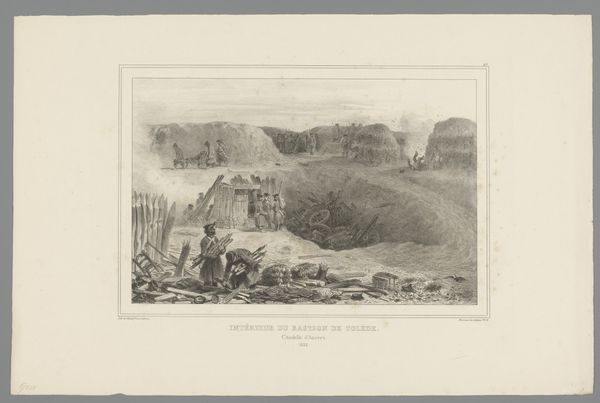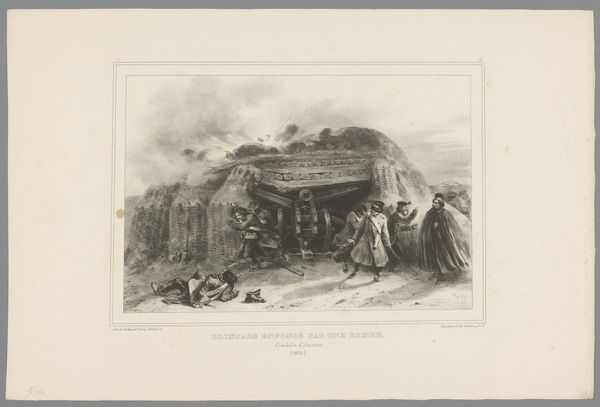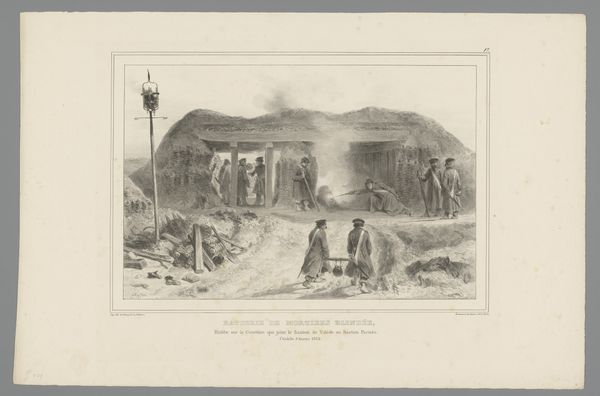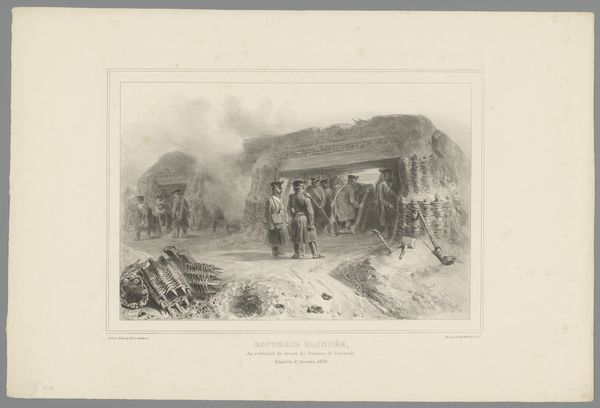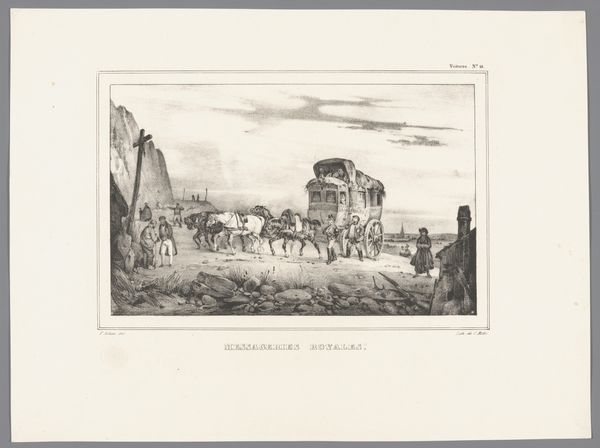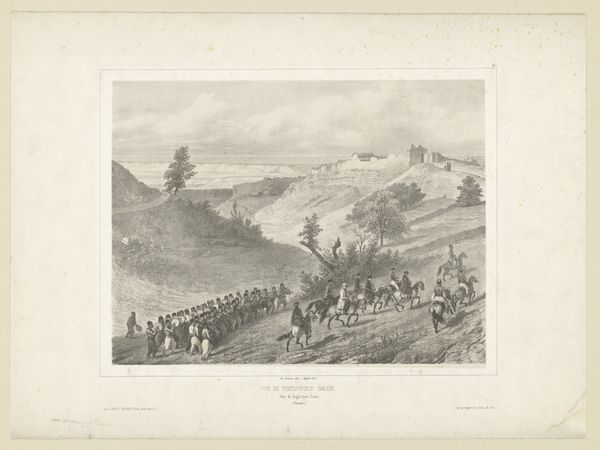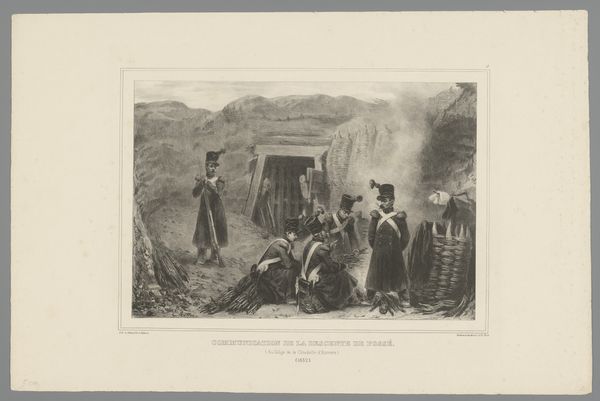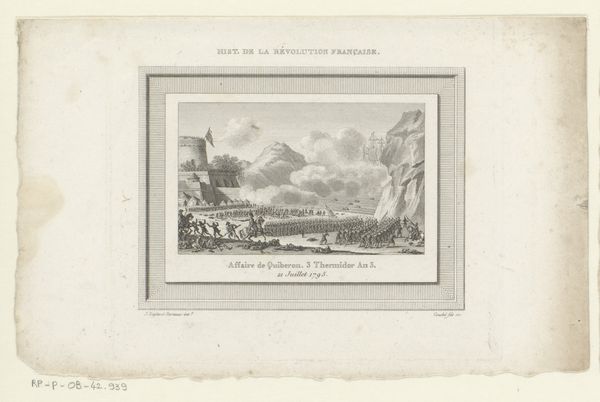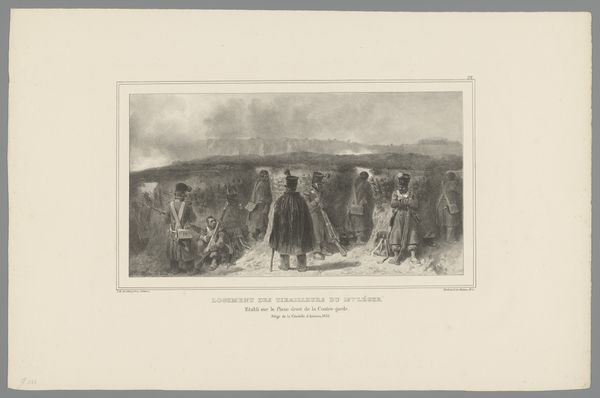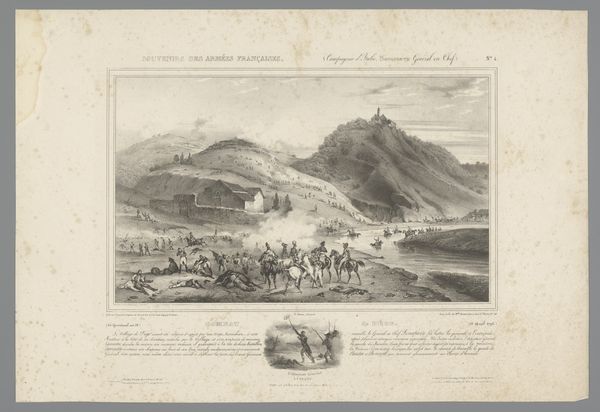
drawing, print, engraving
#
drawing
#
light pencil work
#
narrative-art
# print
#
figuration
#
romanticism
#
19th century
#
line
#
history-painting
#
engraving
Dimensions: height 369 mm, width 549 mm
Copyright: Rijks Museum: Open Domain
Auguste Raffet created this lithograph, Geschut, in 1832. The image depicts a scene of military conflict, likely during the French conquest of Algeria, reflecting France’s colonial ambitions during the July Monarchy. Raffet conveys meaning through carefully constructed visual codes. The cannons and soldiers are symbols of French military might, while the fallen figure at the bottom left represents the human cost of war and colonial expansion. The lithograph was made at a time when France was actively engaged in expanding its empire in North Africa. Raffet's work can be interpreted as a reflection on French militarism and the social consequences of colonial warfare. The image hints at the complex politics of imagery and the public role of art in shaping perceptions of war and colonialism. Further research into French military history, colonial policies, and the biography of Auguste Raffet can provide a more contextual understanding of this artwork.
Comments
No comments
Be the first to comment and join the conversation on the ultimate creative platform.
